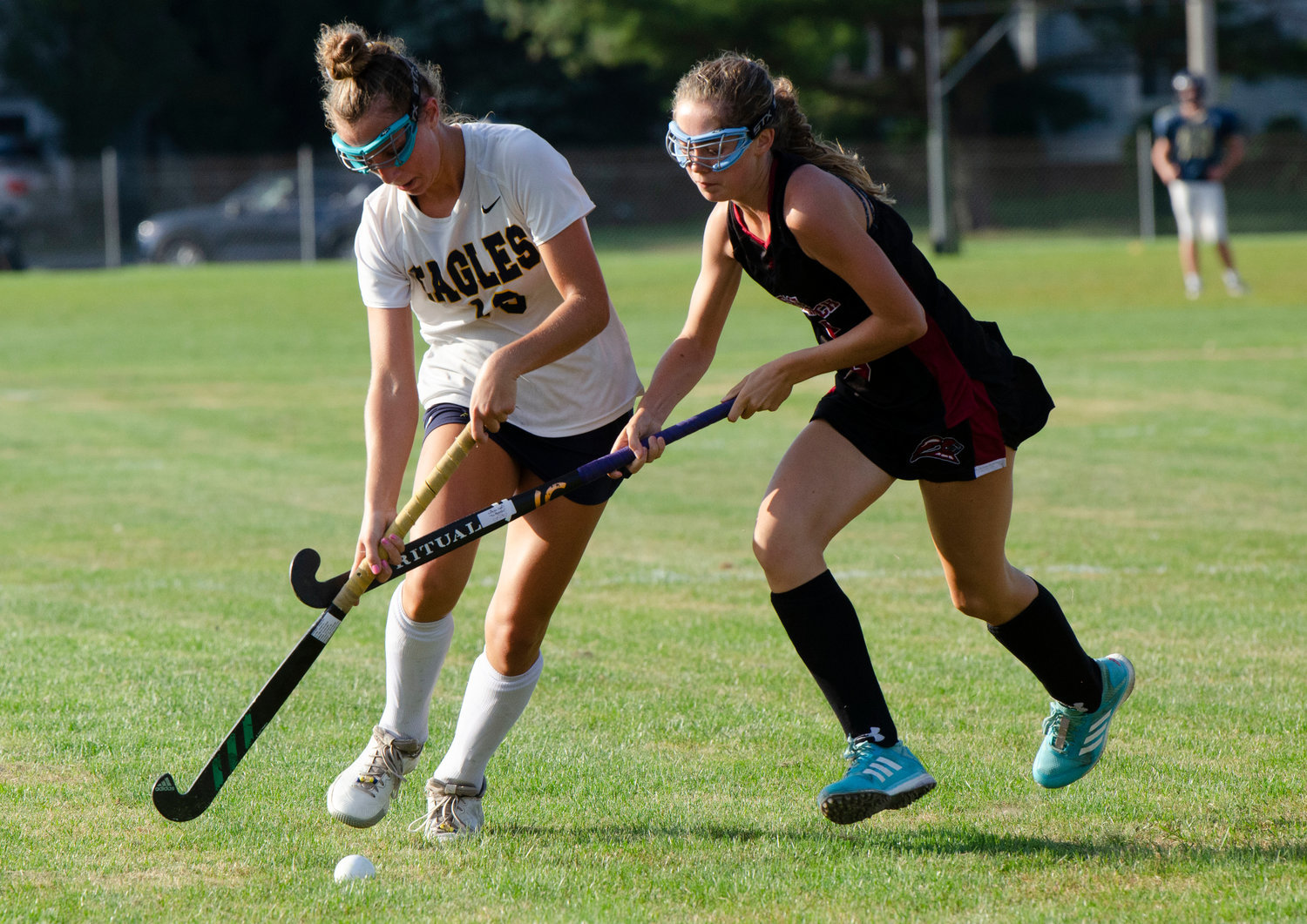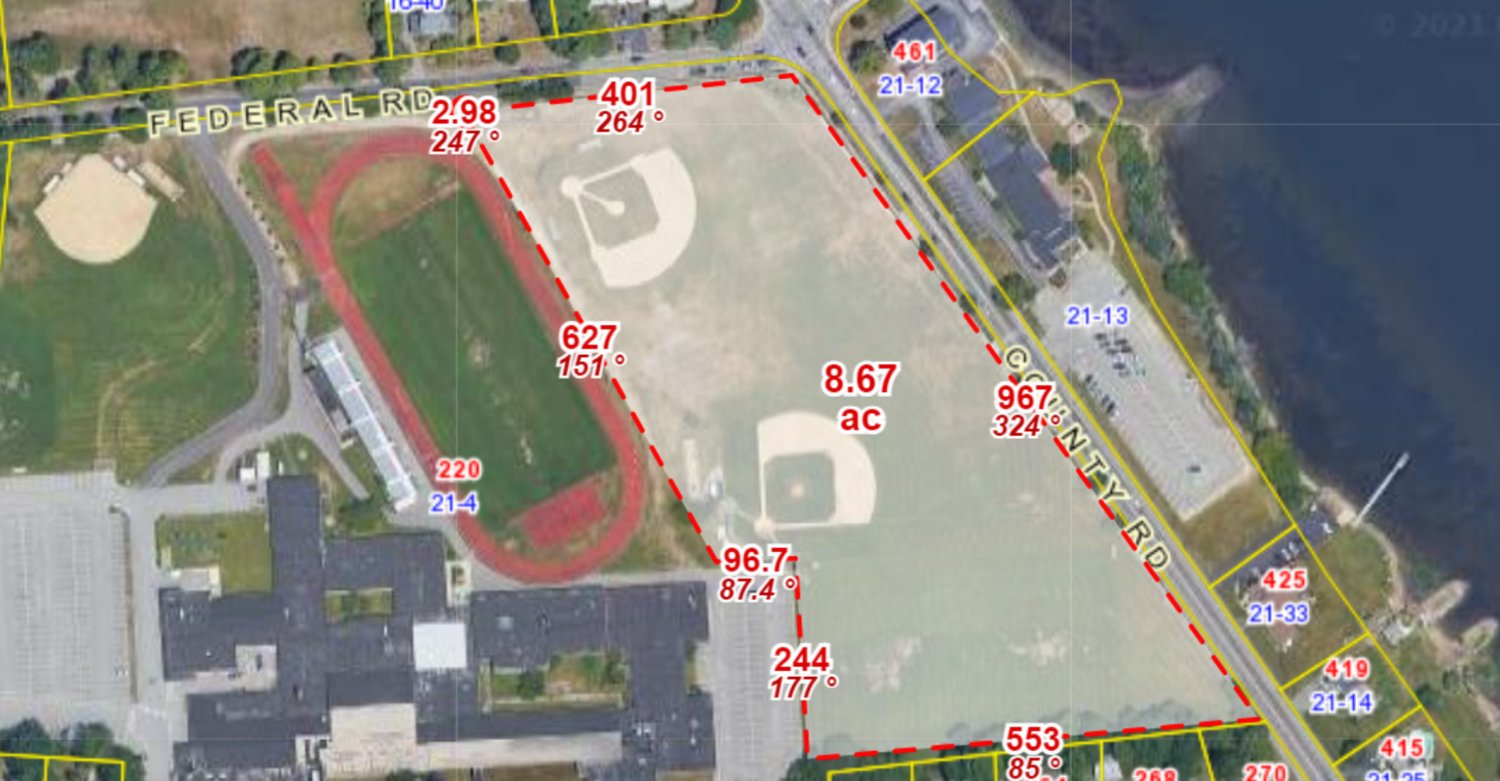Report includes plan for 8 acres of turf at Barrington High School
Fields report also calls for reconfiguring fields at Haines
A new report focused on athletic fields in Barrington includes wide-ranging recommendations, such as covering a large portion of the high school’s playing fields in artificial turf (but not …
This item is available in full to subscribers.
Please log in to continue |
Register to post eventsIf you'd like to post an event to our calendar, you can create a free account by clicking here. Note that free accounts do not have access to our subscriber-only content. |
Day pass subscribers
Are you a day pass subscriber who needs to log in? Click here to continue.
Report includes plan for 8 acres of turf at Barrington High School
Fields report also calls for reconfiguring fields at Haines
A new report focused on athletic fields in Barrington includes wide-ranging recommendations, such as covering a large portion of the high school’s playing fields in artificial turf (but not Victory Field), hiring more employees for the department of public works, and reconfiguring the fields at Haines Park.
The report is the product of the Ad Hoc Athletic Field Advisory Committee (AHAFAC), which was formed more than two years ago. The group’s work was delayed because of the pandemic, but recently the committee reconvened and in October, members voted 8-0 on the final report.
The group focused its work in a variety of areas, but the vast majority of the report (28 of the 39 pages) discusses artificial turf — from possible locations to health concerns and estimated costs.
“We tried to give a very objective assessment — benefits, risks, and what it all costs,” said Steve Boyajian, former town councilor and member of the artificial turf subcommittee of the AHAFAC.
The group settled on a possible location for the turf: the Barrington High School campus. But while most high schools in this state and across the country place artificial turf on the varsity or stadium field, which would have been Victory Field at Barrington High School, the committee instead proposed placing artificial turf across the two baseball fields and the open space in between. The report uses an an aerial photograph of the campus to show the property that would be covered by the artificial turf surface — it runs from the fence along Federal Road south across both baseball fields and the soccer/lacrosse field located next the BHS library parking lot.
The turf would cover about eight acres of land.
“Victory Field initially seemed a common sense location for an artificial turf field if constructed given its prominence on the high school campus, existing lighting, and its use for major events,” stated the report. “However, in order to actually satisfy the community’s desire for a durable playing surface that could accommodate your sports leagues in periods of inclement weather/substandard grass field conditions, an artificial surface within the confines of Victory Field is of limited benefit due to the need to fit the field within a track of acceptable dimensions.”
Members of the artificial turf subcommittee further explained that Victory Field could only host one youth lacrosse game at a time, but a wider swath of turf could host multiple games. (Currently, Victory Field plays host to football, lacrosse and soccer games, depending on the sports season.)
A member of the artificial turf subcommittee said the report was focused on youth sports and field use, and not on accommodating Barrington High School sports teams, despite the fact that the turf was proposed for the BHS campus.
Members of the artificial turf subcommittee included Mr. Boyajian, David Boyes, Bill Horn, Thomas Rimoshytus, David Caldarella, Tess Gagliano and Don Denham.
Members of the Barrington School Committee discussed the AHAFAC’s report during a recent meeting. Barrington Superintendent of Schools Michael Messore said the school district controls the fields at the schools. He also said that while the plan in the report does not include turf at Victory Field, he would be interested in having a conversation about that topic with George Finn, the director of athletics at Barrington High School. Mr. Messore said he was surprised the subcommittee did not look at the boys soccer field as a possible location for artificial turf. He also referenced the idea of placing turf at Victory Field and on another field at the high school.
School officials also spoke about wrapping the report in with a current facilities study being conducted by the district.
Health and safety
The report went into great depth detailing the health and safety concerns surrounding artificial turf.
It focused on different infill materials, highlighting the use of alternatives to the crumb rubber: virgin rubber, granulated cork, a blend of cork and coconut husks, granulated walnut shells, and engineered wood particles. It also referenced studies on whether artificial turf was safer for athletes than natural grass.
“Weighing merits of these studies individually is unlikely to assist in the decision of whether to construct an artificial turf field and is beyond the expertise of the committee’s members,” stated the report. “The metanalysis of existing literature on the subject … describes the uncontrollable variables and open questions regarding injuries on artificial turf…”
The report did reference a study that found a 58 percent increase in injury rates, and mentioned concerns about increasing heat on turf surfaces during the warmer months.
“In the event that a suitable organic fill, such as BrockFill, is determined not to be suitable for performance reasons, the town should anticipate that certain midday events on hot days would need to be rescheduled or relocated,” stated the report.
The report cited possible environmental impacts for installing turf versus maintaining regular grass.
“… It is important to note that the proposed location of the artificial turf surface — eight acres near the Barrington River — is currently treated with fertilizers and weed preventers on a regular basis and is watered to maintain grass,” the report stated.
“While some means of irrigation would still be advisable to maintain an artificial turf field, watering would be significantly reduced and no fertilizers or herbicides would need to be used.”
Baseball on turf?
The report cited potential problems with placing turf on the Barrington High School baseball fields.
While the proposed turf could accommodate as many as six U12 soccer fields, “The impediments to this flexibility are the existing varsity and junior varsity baseball diamonds, which present two main issues: (1) the infield dirt and pitcher’s mounds; and (2) the fact that other sports cannot be safely played in close proximity to an in-use baseball field…
“It is possible that these issues could be mitigated, but not eliminated.”
Scheduling conflicts could pose a challenge during the spring season especially, as baseball and lacrosse would be sharing the space.
Barrington High School Baseball Coach Vin Scandura said he would prefer the BHS baseball fields be kept as natural grass.
“I’m not a big fan of turf,” Coach Scandura said. “There can be injuries at the bags. I’ve seen in baseball … coaching the AAU circuit … they’re on astroturf… I’ve seen a bunch of injuries. You slide late, there’s no give (on the turf).
The coach added: “Are you going to roll out a fake mound? It’s very hard to pitch on dirt with turf shoes, and you can’t wear metal cleats on turf.
“It just doesn’t play well at all for baseball.”
Coach Scandura said it was just a few years ago when officials spent thousands of dollars to rebuild the Barrington High School varsity baseball field infield. He said the field is in great shape, and may be one of the best high school fields in the state.
“I’m a purest,” Coach Scandura said, adding that baseball should be played on natural grass and dirt.
The BHS coach did acknowledge that there is a need for artificial turf at Barrington High School. He said sports such as field hockey would greatly benefit from playing on an artificial turf surface. (In fact, the BHS field hockey team did private fund-raising to pay for rental fees so the team could practice on a turf field in nearby Massachusetts.)
“I understand the need for it,” Coach Scandura said. “You can’t play field hockey on grass.
“It seems like you could have two fields of turf (at Barrington High School): Victory Field and the JV soccer field,” he said.
“I’d prefer to do it at Victory Field and the JV field.”
Haines Park
Part of the report focused on acquisition and development of additional fields, but most locations identified by committee members had “substantial limitations.”
The Tall Cedars Conservation Land, a wooded area near Primrose Hill School, George Street property, and land at the former Zion Bible College property were mostly deemed unsuitable to host athletic fields, reported the committee.
Haines Park was identified as a potential space for “possible expansion opportunities.” Committee members proposed creating a new multi-use field that would overlap the large baseball diamond located closer to Washington Road. They also proposed reconstructing the smaller baseball field to the west and building a new multi-use field there.
“An integral part of any development work must be one or more irrigation system(s),” stated the report. “Without proper irrigation, the potential for good field condition in both the short and long-term is not good.”
The town hired a landscape architect to prepare sketches of what the work would look like. Parking at Haines, which has been an issue in the past, was left mostly unchanged.
Barrington recently signed a 30-year lease agreement with the state for Haines Park.
Turf costs
So how much would it cost to bring artificial turf to Barrington High School? According to the report, the estimated cost to install turf across the eight-acre swath that runs west along County Road is $10 per square foot, or approximately $3.8 million. That figure does not include the installation of new fences, spectator and player amenities, drainage assessments, and lighting. A committee member said the cost of each light pole is estimated at $80,000 to $100,000. Officials also said the town would need to be prepared to spend between $1.5 million and $2 million every 10 to 15 years to replace the artificial turf surface.









